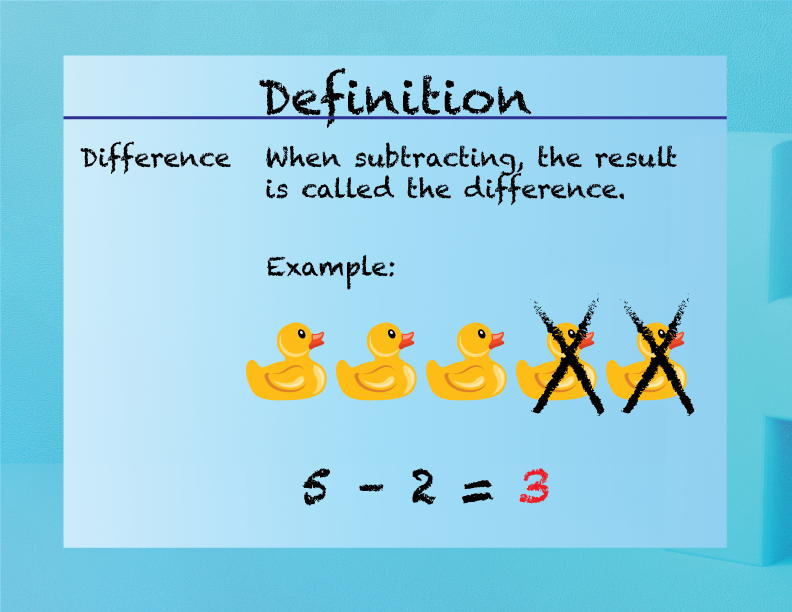
Display Title
Elementary Math Definitions--Addition Subtraction Concepts--Difference
Display Title
Difference

Topic
Addition and Subtraction
Definition
Difference is the result of subtracting one number from another.
Description
Difference is a fundamental concept in subtraction, representing the result of subtracting one number from another. For example, in the subtraction problem
9 − 5 = 4
the difference is 4. This concept is crucial for understanding arithmetic operations and solving mathematical problems.
In mathematics, difference is symbolized by the minus sign (-). It is used to determine how much one number is greater or smaller than another. Understanding difference helps students develop problem-solving skills and logical thinking, preparing them for more advanced mathematical concepts such as algebra and calculus.
In real-world applications, difference is used in various scenarios, such as calculating change in financial transactions, measuring quantities in recipes, and more. For example, if you have $9 and spend $5, the difference helps you determine that you have $4 left.
Teacher's Script: "Let's talk about difference. Difference is what we get when we subtract one number from another. For example, if you have 9 candies and eat 5, how many candies do you have left? Yes, you have 4 candies! Difference helps us find out how much is left."
For a complete collection of terms related to Addition and Subtraction click on this link: Addition and Subtraction Collection
| Common Core Standards | CCSS.MATH.CONTENT.1.OA.B.3, CCSS.MATH.CONTENT.2.NBT.B.9 |
|---|---|
| Grade Range | 1 - 3 |
| Curriculum Nodes |
Arithmetic • Addition • Addition Expressions and Equations |
| Copyright Year | 2021 |
| Keywords | addition, subtraction, equation, place value |